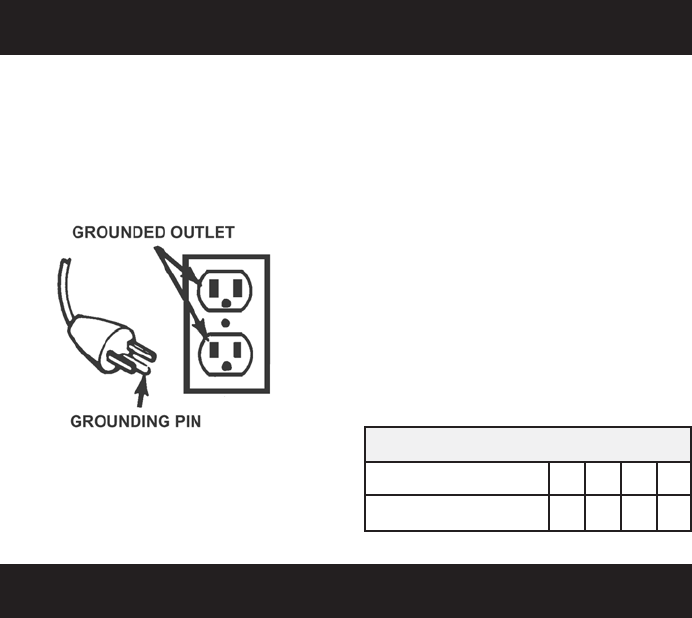
5
BEFORE USING YOUR BATTERY CHARGER
It is important to understand the charger’s requirements. This section explains the
charger’s electrical requirements and how to prepare a battery for charging.
PLUGGING IT IN
Your charger requires a 120V AC
receptacle installed according to all local
codes and ordinances.
USING AN EXTENSION CORD
The use of an extension cord is not
recommended. If you must use an
extension cord, please make sure that
you follow these guidelines:
• Make sure that pins on plug of
extension cord are the same number,
size, and shape as those of plug on
charger.
• Check that the extension cord is
properly wired and in good electrical
condition.
• Make sure that the wire size is large
enough for its length and for the AC
ampere rating, as specified in the
chart below.
Length of Cord, in Feet 25 50 100 150
AWG* Size of Cord 18 16 12 10
*AWG=American Wire Gauge
MINIMUM RECOMMENDED EXTENSION CORD
PREPARING YOUR BATTERY TO BE CHARGED
It is important that you read and follow these guidelines while you are preparing to
charge the battery.
• Make sure that you have a 12 volt
lead-acid battery. Determine voltage
of battery by referring to vehicle
owner’s manual. Charge battery
initially at charger’s lowest rate.
• Clean the battery terminals. Be
careful to keep corrosion from getting
in or around your eyes.
• Wear safety glasses. See additional
“Personal Safety Precautions” on
page 4.
• For batteries with removable vent
caps, if required, add distilled water to
each cell until the battery acid
reaches the level recommended by
the manufacturer. This will help purge
excessive gases from the cells. Be
careful not to overfill. If you have a
sealed battery with non-removable
vent caps, no action is necessary.
• Take time to read all of the battery
manufacturer’s specific precautions,
such as removing or not removing
vent caps while charging, and
recommended rates of charge.
• Be sure that the area around the
battery is well ventilated while it is
being charged. Gas can be forcefully
blown away by using a piece of
cardboard or other nonmetallic
material as a fan.
• If it is necessary to remove the battery
from the vehicle to charge it, always
remove the grounded terminal from
the battery first. Turn off all vehicle
accessories to avoid sparks from
occurring.
• NOTE: A marine (boat) battery
installed in a boat must be removed
and charged on shore.


















